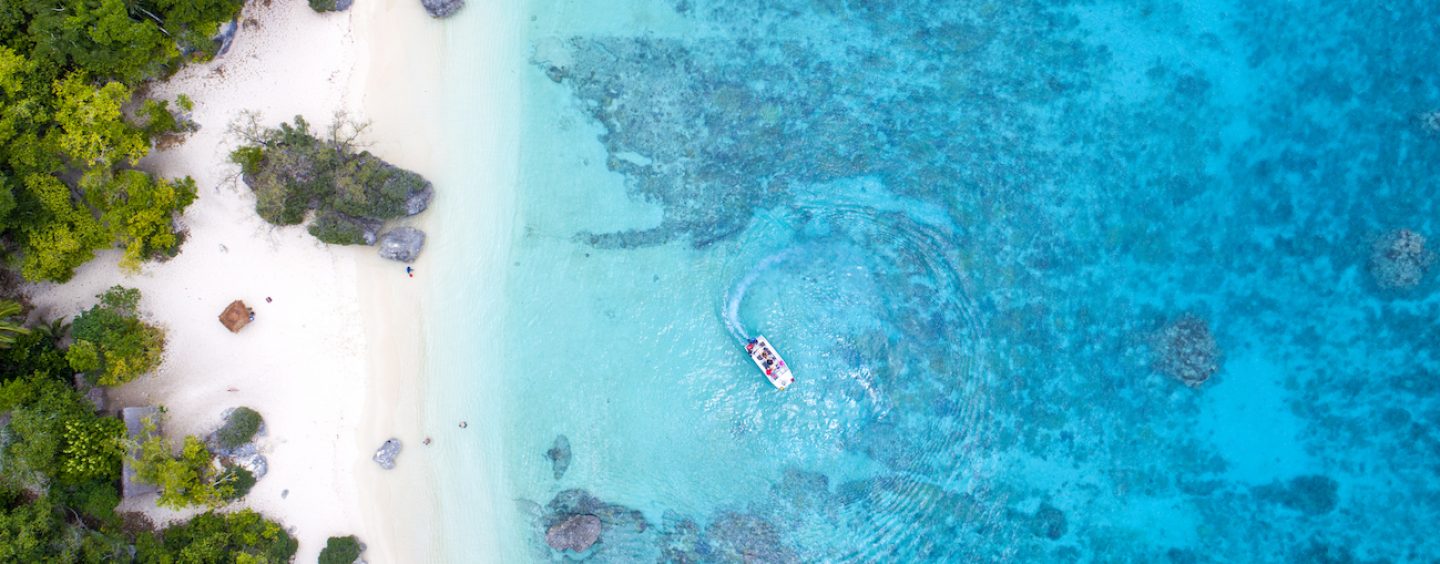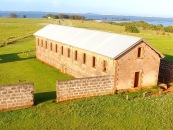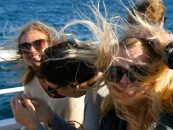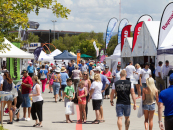If you and your partner dream of endlessly cruising a tropical paradise with crystal clear water, trading cans of beer for lobster with the locals, and experiencing beautiful red glow sunsets, then you don’t have to sail that far.
Vanuatu, a South Pacific Ocean nation made up of more than 80 islands is an ideal boating destination for cruisers contemplating a Coral Sea crossing just east of Queensland and beyond. Each year, there are around 350 recreational boats that sail into the waters of Vanuatu.
It is quite amazing to know that for almost a century, Vanuatu (formerly New Hebrides) was shared by two colonizing governments – the English and the French, since the 1880s, with the Anglo-French condominium agreed upon in 1906. The island state gained its independence only in 1980. The official name of Republic of Vanuatu was used after independence. The country gained recent fame when Cyclone Pam hit the country in March 2015. The severe tropical cyclone was considered the worst natural disaster in the history of Vanuatu. The newsworthy efforts of the owner, captain and crew of the superyacht Dragonfly to assist the recovery of the people of Vanuatu after the storm triggered a butterfly effect where the members of boating communities have been providing assistance to isolated islands around the world.
GREAT CUSTOM AND BEAUTY
The name Vanuatu means ‘Land Eternal’ and is recognised for its diverse landscape and variety of distinct cultures. The small island nation boasts over one hundred languages, but Bislama, English and French are widely spoken. A strong Melanesian culture flows through the communities in many villages dotted along the breathtaking geography, with great ceremonies and dance, food, arts and culture varying from place to place, and island to island.
Boating along these waters is a privilege very few independent recreational boaters get to experience. Port Vila is the primary port of entry into Vanuatu. It is well equipped to support visiting yachts. The Port Vila DIY arrival process allows you to apply online; otherwise, a local agent is also available. The quarantine, customs and immigration fees are some of the lowest in the Pacific. Boat service providers, such as marina operators and yachting service suppliers are able to provide assistance, to point you in the right direction, and to answer general queries about sailing in the area.
Although Port Vila is the most popular and most convenient point of entry, you may also clear in at Lenakel on Tanna, Luganville in Santo, and Sola on Vanua Lava.
When you leave behind the hustle and bustle of Port Vila, the capital city and economic centre, the rest of the island of Efate, and all the anchorages of the spectacular island nation are yours to share with the schools of tropical fish, lush tropical forests and friendly ni-Vanuatu (the term used to refer to the people of Vanuatu).
Sailing just 30 nautical miles from Port Vila, one is immediately brought back centuries in time. The rustic scenes of mangroves covering the shorelines fill the view from the calm seas around the islands, while smoke comes out of coastal and hillside villages to indicate where communities live. Beyond the capital of Port Vila, be prepared as nothing is available – which is probably the reason why you are going to enjoy your time so much.
Being just a step away from nature and offering an affordable tropical lifestyle, Vanuatu is home to some 8000 expatriates, many of whom reside in the Port Vila area. The expatriate elements, integrated with the very vibrant and colourful native culture and rich history of the area, have created a relatively cosmopolitan community. Infrastructure and entertainment facilities are on the rise as economic activities continue to grow. The city has further seen a resurgence of interest from cruising sailors and of the presence of a number of superyachts in the harbour.
The government and tourism agencies encourage independent cruising travellers as it helps spread out the tourism spend to the lesser known locations. The ni-Vanuatu have close attachment to their land and are very proud of their traditions and culture. Each tribe welcome visitors in their own unique ancestral traditions among their beautiful village houses built of local timbers and woven grass mats. When ashore, you can ask around for a guided tour or for the local people to put on a cultural show. They may also agree to prepare local food or to supply you with freshly grown fruits and vegetables. As should be, payment is expected for every service they provide for you. Do not negotiate or haggle with the price if you want the old spirits on your side.
ISLAND BOATING
The best time to arrive is April, after cyclone season, and the weather should remain favourable until November. Be sure to study each location as many events and customs are scheduled at particular times of the year. Cruising is relatively easy as the surrounding waters are deep with good visibility. Each major island is dotted with smaller islands, bays and coves offering good shelter for overnight anchorages. The archipelago is small enough to be navigated via anchorage-hopping during daytime. Once you have decided where to spend your time, the adventure begins.
Heading off from Port Vila, a nearby anchorage is Havannah Harbour a cruiser’s mecca. The bay is well protected and there are a handful of trendy resorts, bars and restaurants along the shoreline. Located on the west side of Efate Island, turtles and dugongs can be seen. You can bask under the sun all day before enjoying the awesome sight of the sun setting with a cocktail in hand.
Heading north of the archipelago, around 170 nautical miles from Port Vila, you will find Espiritu Santo (nicknamed Santo), the largest island that has a reputation for being an adventure playground
with WWII relics, mountains ranges and spectacular scenery both above and below the water. Luganville is the northern capital of Vanuatu and the next best place to provision and refuel after Port Vila. There are several places to anchor close by to town and several restaurants, supermarkets and butchers to be found plus the large Mama’s market at Unity Park. Customs and immigration services are available here. This is also the only other place you can organise an extension of your visa.
The beautiful Ratua Island between Aore and Malo islands is a tranquil anchorage. Malo Island is home to many historical and cultural sites, blue holes, and the wreck of the US Tucker – another casualty of WWII. Although the western side of Santo is very exposed and lacking many safe anchorages, sailing up the east side will bring you to the sheltered waters of Palikulo Bay and Peterson Bay (Oyster Island). Here you will find an anchorage that is completely sheltered, once the reef has been negotiated. The beautiful white sandy beaches of Hog Harbour and Port Olry are stunning anchorages in the right winds. Further northward, you can choose to depart for the Banks Islands or follow the coastline around into Big Bay, where you will find the Vatthe Conservation Area.
Sailing south east from there is Pentecost Island, famous for land diving, a local ritual performed. This tradition was the precursor to bungee jumping, where men jump off wooden towers around 20 to 30 meters high, with two tree vines wrapped around the ankles.
Malekula, the second largest island in the Vanuatu archipelago of islands lies the Maskelynes, a set of beautiful islands with a multitude of safe anchorages, beautiful sandy beaches and friendly people. The Maskelyne people are excellent seafarers and it’s quite usual to see them sailing their outriggers fishing on the many reefs in the area. Some inland villages have seen few “white” men, and remain relatively unchanged for decades. It is not so long ago that cannibalism was still active and it is possible to see evidence of these sacred sites today. Much of Malekula was colonised by the French coconut farmers, so French has been the main language in many areas. But on this island alone, there are actually 28 different local languages spoken, proof of the cultural diversity to be found here.
Heading south to Amrym Island and the old village of Fanla. This is where you can watch the ROM dance. An amazing experience, the ground reverberates with the rhythmic foot stamping as the dancers herald in the ROMs with their intricate masks and flowing costumes. This area provides spectacular views across the anchorage.
Well within a day’s journey is Avohk Island. Once you arrive, don’t be surprised to see Chief Kaiser paddling out to your boat to ask if you want to see the Smol Nambis dance performed by the village men. This performance immerses you in the rhythm and amazes you with traditional attire. After which time, you can walk around the village to buy some vegetables and mudcrab.
TAFEA province is composed of the southernmost islands in the Vanuatu archipelagic chain, made up from Tanna, Aneityum, Futuna, Erromango and Aniwa. Each of the islands is sparsely populated. Futuna and Aniwa are raised coral plateaus with a Polynesian culture, rather than Melanesian, which is still maintained today. Both are fascinating islands but there are no safe anchorages on either. The three islands of Aneityum, Tanna and Erromango are mountainous islands. They provide a range of anchorages, as well as the chance to provision with fresh fruit and vegetables from the lush village gardens. For a memorable experience, head to the coast near Sulphur Bay on Tanna Island and make your way to Mount Yasur, an active volcano 361m high above sea level.
It is the perfect jumping off point for your cruising adventure with clearance now available at both Anelghowhat (Aneityum) and Lenakel (Tanna), which can also be facilitated via Port Resolution. During the cruising season, humpback whales and pilot whales, plus pods of dolphins, are often seen along this stretch of coast making it an enjoyable day sail.
GETTING THERE AND AWAY
Be sure to wait for glass-out conditions. Remember your 5-day forecast is often going to be wrong after 3 days, so keep updated. It is advisable that your journey from the Gold Coast to Vanuatu can include a stop at New Caledonia for rest. Without stops, your journey during daylight hours will take approximately 5 days, at 11knots.
A one-month visa is available when you arrive, and you can arrange an additional one, three or six-month extension at the immigration offices around the country.
When in Vanuatu, you can easily sail from anchorage to anchorage in 3 to 4 hours. It can take up to two seasons (June to October) to see much of Vanuatu. You can leave your boat with one of the marinas or the boat yard for cyclone season, and arrange for annual maintenance work to be carried out while you are away.
Once you are ready to leave Vanuatu, you can sail on to Fiji, Tonga and American Samoa, or head northeast towards Tahiti and French Polynesia joining the famous Coconut Milk Run to the islands of the North Pacific Ocean. However, once you arrive in Vanuatu, you may never want to leave, as it has been popular for exploring mariners since first contact in 1606. Currently, the country’s status as a tax-free haven makes it very attractive for a seachange.
Beyond the pristine beaches, swimming in a natural blue hole, climbing along the edge of a live volcano, and an abundance of must-try local food specialties, Vanuatu has the highest “Happy Planet Index” score outside of the Americas. It really is one of the last frontiers where you can cherish your freedom to do whatever you want, whenever you want.
By Andy Kancachian
Cover image by Kirkland, supplied by Vanuatu Tourism



























